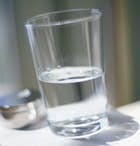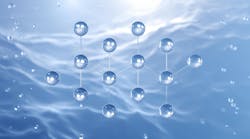Underwriters Laboratories (UL), announced that it has combined existing proprietary testing methods for identifying emerging contaminants in water. By using highly specific and sensitive instrumentation practices, UL said it has developed two new methods that aim to provide cutting edge and cost-effective analytical services for contaminants such as pharmaceutical and personal care products (PPCPs) in the 160,000 water supplies in the U.S.
UL combined its existing methods (L200, L211, L220 and L221) to develop UL test method L222 used for the analysis of endocrine disrupting chemicals (EDCs) and PPCPs. This method focuses on detecting and analyzing nearly 30 most frequently studied and detected contaminants of emerging concern including acetaminophen, bisphenol A, caffeine, DEET, estrone, nicotine, nonylphenol, triclosan, etc. UL also streamlined the analysis of selected semi-volatile organic compounds including sterols, phosphate flame retardants, fragrances, polyaromatic hydrocarbons (PAHs), phenols and pesticides to create UL method S190.
Both the L222 and S190 testing methods are used to analyze contaminants of emerging concern found in treated wastewater, surface water, groundwater and municipal drinking water.
According to a report from IMS Health, a provider of market intelligence to the pharmaceutical and health care industries, in 2009, global pharmaceutical sales exceeded $773 billion. As a result, the consumption of PPCPs has increased significantly over the past 20 years triggering a rise in the amount of PPCPs entering water supplies through excretion, bathing and the disposal of medications in sewers and trash. Today, UL analytical capabilities include analysis of nearly 120 emerging contaminants including EDCs, PPCPs, flame-retardants and other contaminants of emerging concern.
“The human health and environmental effects associated with PPCPs in water supplies are not well understood at this time,” said Dennis Leeke, business manager, UL Global Water Business. “UL recognizes the importance of this growing issue and is one of only a few laboratories in the country that has developed methods to detect pharmaceuticals and other compounds at ultra-low levels. We are committed to supporting the drinking water industry by providing water utilities and government agencies with new ways to detect and analyze emerging contaminants more accurately than ever before.”
Source: UL


